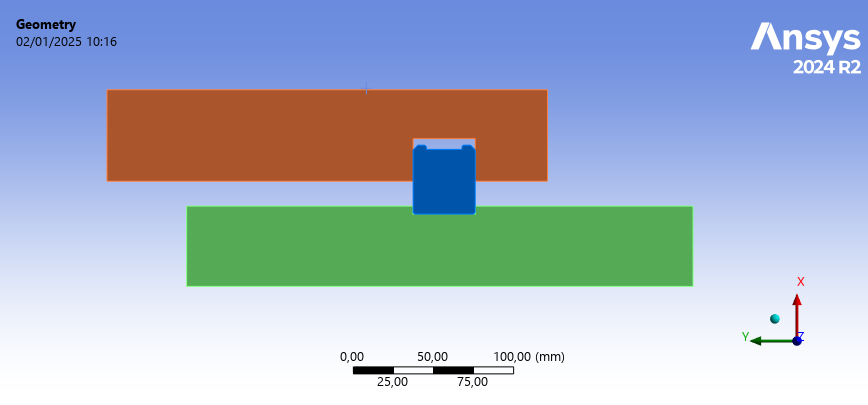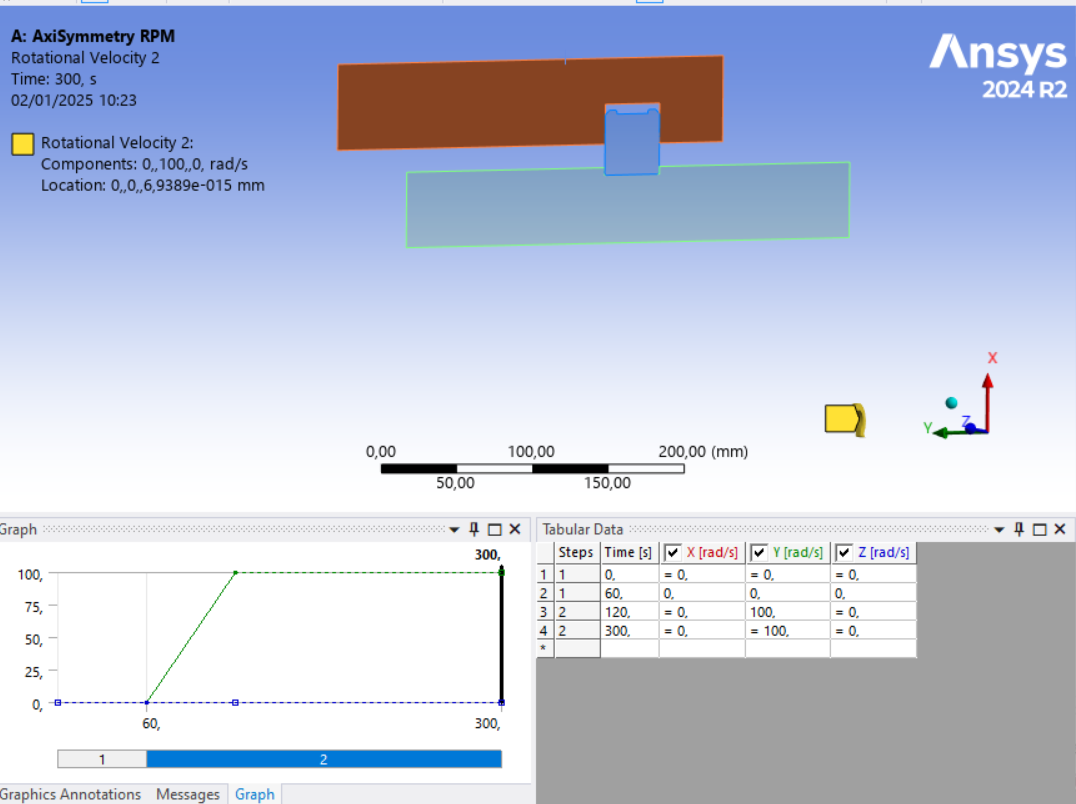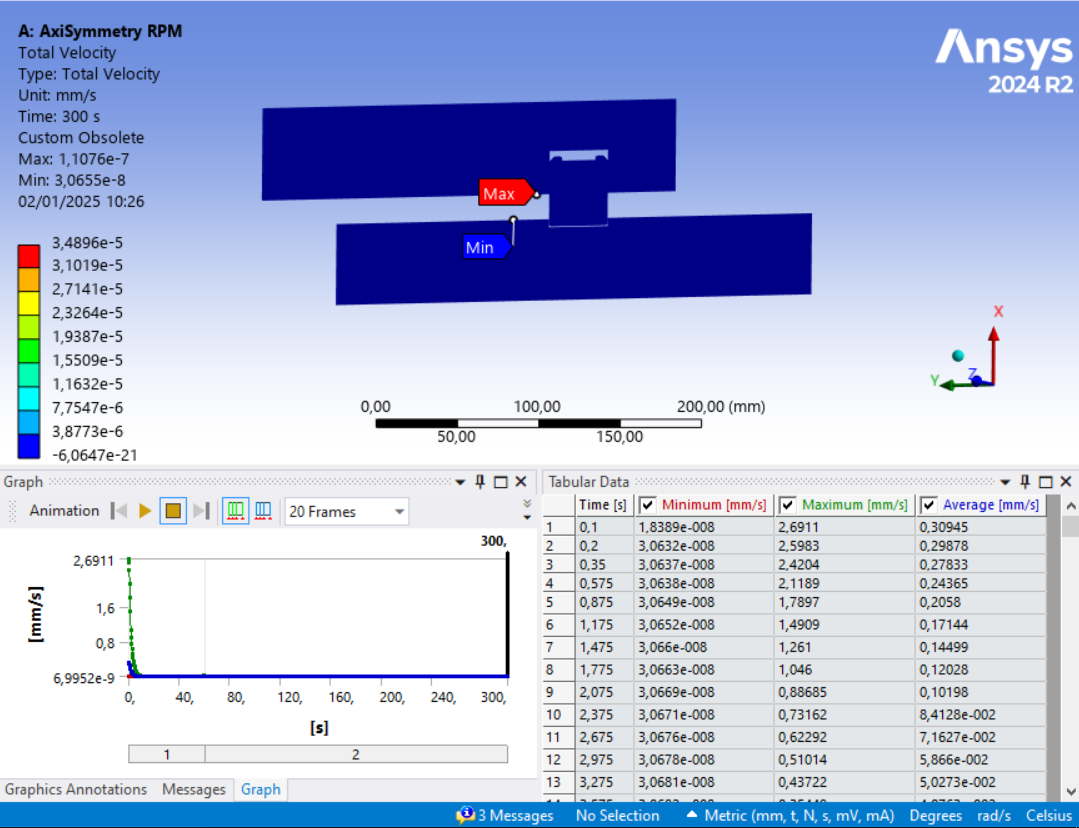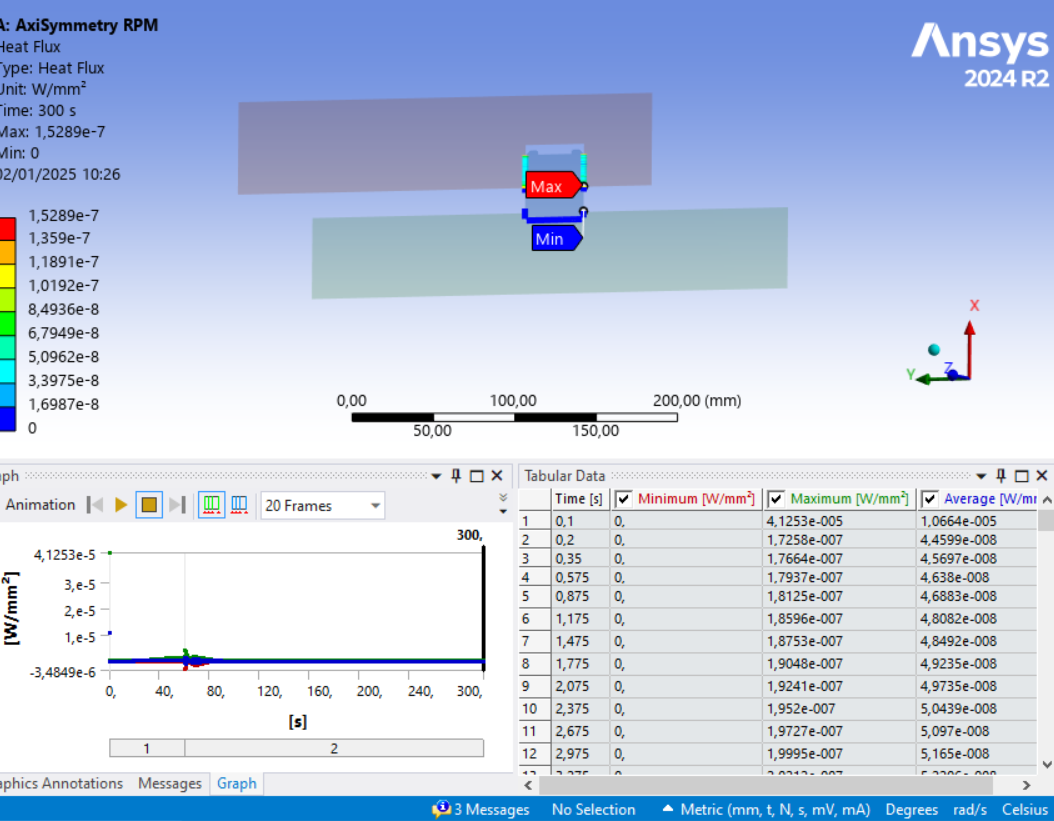-
-
January 2, 2025 at 9:48 am
christopher.smyrek
SubscriberHey guys,
I try to set up a frictional thermal runaway analysis. That means I would like to prove in a transient thermal-mechanical coupled field analysis, that the thermal heat of the friction contact leads to more heat --> higher temperature --> more thermal expansion --> more contact pressure --> more heat and so on.. A kind of escalating heating effect.
My idea is the following: (for public discussion purpose it is a little bit simplefied)
I have a axisymmetric 2D model of the problem. Red and green are housing parts and blue is the sealing i would like to evaluate more in detail. The red part is rotating arround the y-axis. The rest is standing still. Frictional contacts are defined between red and blue, blue and green. Green is fixed over a compression only on the bottom line.
- Load step: heating up all bodies to working temperature of 50°C for 60 secounds
- Ramping up the rotational velocity up to 100 rad/s for 60 secounds
- holding 100 rad/s for an amount of time (at the moment 480s)
When I look now at the results, I have the problem, that it seems to be that the velocity is not working in the way i would assume it.
The total velocity is not showing my ramping up set up.
And the heat generation (looking at heat flux) is also not correlating to the ramping up. This would be at least what i would expect. I have an amount of contact pressure (something arround 10 MPa). In combination with the rotation veloctiy multiplied with friction coefficient i would assume a heating up.
Do i have a missunderstanding arround the rotational velocity function in this setup?
Any help, idea or tipp is appreciated!
-
January 8, 2025 at 3:46 pm
dlooman
Ansys EmployeeRotational velocity just produces centrifugal forces. It doesn't actually rotate a body. An axisymmetric body can't rotate out of plane to begin with. You probably need to create a full 360 degree model. The command ICROTATE will produce a relative velocity at the contact interfaces based on the radius, but just for a single rotational velocity. It can't be ramped.
-
- You must be logged in to reply to this topic.



-
4607
-
1510
-
1386
-
1209
-
1021

© 2025 Copyright ANSYS, Inc. All rights reserved.











